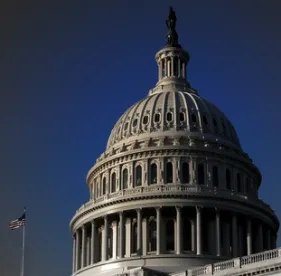On March 27, 2020 the Coronavirus Aid, Relief and Economic Security Act (CARES Act) was enacted to encourage eligible employers to keep employees on their payroll, despite economic hardship caused by COVID-19, by creating Payroll Protection Program loans, providing an employee retention tax credit and permitting certain employment taxes to be deferred. However, eligible employers cannot benefit from all of these relief provisions. So how do eligible employers take full advantage of the relief provided for in the CARES Act?
CARES Act Relief
Payroll Protection Program
This is a new loan program administered through the Small Business Administration that provides up to $349 billion in loans to certain eligible entities with less than 500 employees, with such loans being subject to forgiveness under certain circumstances. The loans may be used for a variety of purposes, including certain payroll costs, rent, utilities, and interest on certain debt existing prior to February 15, 2020.
Employee Retention Credit
Employers whose business is fully or partially suspended by government order due to COVID-19 during the calendar quarter or whose gross receipts are below 50 percent of the comparable quarter in 2019 are eligible to receive a tax credit for wages paid to certain employees. For employers with less than 100 employees on average in 2019, qualifying wages are those paid to all employees, regardless if they worked or not. For employers with over 100 employees on average in 2019, qualifying wages are those paid to employees who were furloughed during the calendar quarter.
Payroll Tax Deferral Summary
All employers are permitted to defer paying the employer portion of Social Security and railroad retirement taxes through the end of 2020, and for self-employed individuals to defer paying half of the taxes required under IRC 1401(a). One half of those deferred payroll taxes are due by December 31, 2021 and the other half by December 31, 2022.
Interactions Between Relief Provisions
These relief provisions provide cash to employers to help them pay their employees, among other things. However, some of the benefits under these programs are mutually exclusive. Utilizing either the employee retention credit or payroll tax deferral will not disqualify employers from qualifying for the Payroll Protection Program. On the other hand, receiving certain benefits from the Payroll Protection Plan will disqualify employers from some or all of the employee retention credit or payroll tax deferral benefits. The interactions between the various relief provisions can be confusing and can lead to the loss of intended benefits. What should employers consider to maximize the benefits under the relief provisions?
Employee Retention Credit vs. Payroll Protection Program
Pursuant to Section 2301(j) of the CARES Act, if an employer who is otherwise eligible for the employee retention credit receives a Small Business Interruption Loan under the Payroll Protection Program, then the employer is disqualified from receiving an employee retention credit. To be clear, the CARES Act does not simply disqualify wages paid by the employer after the employer receives the loan. Rather, according to IRS guidance the employer is completely disqualified from eligibility for the employee retention credit. Moreover, this only applies if the employer receives the loan (merely applying for the loan does not appear to have any disqualifying effect).
For employers who are waiting to hear back from the Small Business Administration, keep in mind that the credits are claimed by reporting the total qualified wages for the calendar quarter on federal employment tax returns (Form 941 for quarterly filers). The CARES Act does not limit the time period during which an employer can claim the employee retention credit for qualifying wages nor does the CARES Act prevent an employer from amending their employment tax returns to later claim the credits. As such, there is no harm in simply applying for the Small Business Interruption Loan first and claiming the employee retention credit if the employer is not approved for the loan.
Payroll Tax Deferral vs. Payroll Protection Program
Pursuant to Section 2302(a)(3) of the CARES Act, if an employer who is otherwise eligible for the payroll tax deferral has had any portion of its Small Business Interruption Loan forgiven, then the employer is not eligible for the payroll tax deferral. The IRS recently provided additional guidance about this disqualification by answering some Frequently Asked Questions.
According to that guidance, employers who have received a Small Business Interruption Loan may continue to defer payroll taxes through the date the lender issues a decision to forgive the loan in accordance with paragraph Section 1106(g) of the CARES Act. Only once the employer receives a decision from its lender that its Small Business Interruption Loan is forgiven is the employer disqualified from the payroll tax deferral. Moreover, the employer is simply disqualified from further deferrals of payroll tax. The amount of the payroll taxes deferred up until that point continues to be deferred and will still be due on December 31, 2021 and December 31, 2022.
As a result, applying for and receiving a Small Business Interruption Loan will not disqualify an employer from deferring its payroll tax. Accordingly, all employers should consider working with their payroll provider, payroll departments or payroll software to immediately begin deferring those payroll taxes.
Employee Retention Credit vs. FFRCA Family/Medical Leave
The Families First Coronavirus Response Act (FFCRA) provides tax credits under the Emergency Paid Sick Leave Act (EPSLA) and under the Emergency Family and Medical Leave Expansion Act (FMLA Expansion). Both the EPSLA and FMLA Expansion require employers to provide sick and family leave, respectively, to employees for qualifying purposes related to COVID-19. Generally, employers subject to paid leave requirements are entitled to fully refundable tax credits to cover the cost of the leave required to be paid for the periods of time during which employees are unable to work for various COVID-19 related circumstances.
Employers should carefully monitor the reason employees are paid while not working. The amount of qualified wages for which an eligible employer may claim the employee retention credit does not include the amount of qualified sick and family leave wages for which the employer received tax credits under FFCRA or code section 45S (and vice versa).
Not only do these tax provisions apply to wages paid during the remaining calendar year, Congress is expected to allocate additional funding to the recently-depleted Payroll Protection Program. So even if an employer missed their chance at a Payroll Protection Program loan, these issues will remain relevant to employers for the foreseeable future.




 />i
/>i
